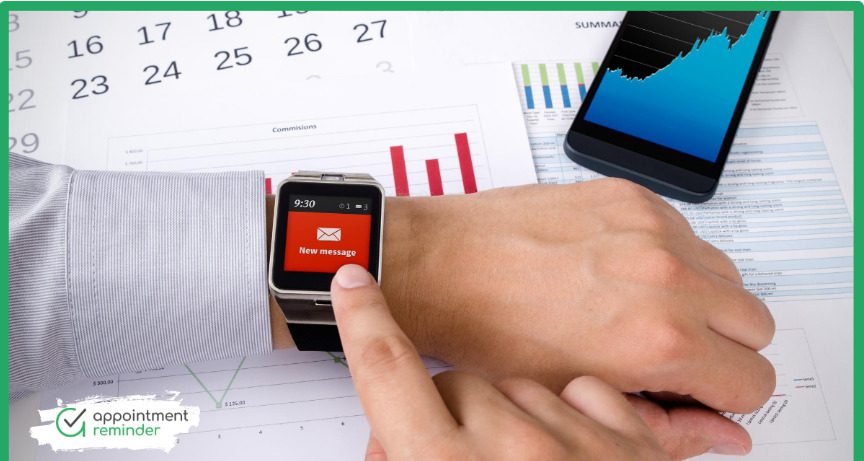How do you currently reach out to clients to remind them of upcoming appointments?
As a business, you have several options to choose from – emails, phone calls, text messages, and even direct mail. Whichever method you use, the goal is to ensure convenience for your client and reduce business expenses, such as costly no-shows.
The last thing you want to do is agitate clients by sending multiple messages in various forms. So, how do you choose between the two most popular methods – a reminder call and text message reminders?
The answer is you don’t have to choose! You just have to know how to best help and work with your individual client base. Here are a few tips on when to use appointment reminder calls and text messages.
When to Use Text Reminders
Quickly growing in popularity for businesses of all sizes is appointment reminders via SMS text messaging.
The benefits of text message appointment reminders are plentiful. You can immediately reach your client and reduce the chances of no-shows. Since most people always have their phones on them, you can pretty much guarantee that the text message will reach them within a matter of minutes.
When you use a text messaging service for appointment reminders, they’re easy to automate, which minimizes the time staff spends on scheduling tasks.
Although studies show that text messaging is the preferred way to receive appointment reminders, it should not be the only scheduling and reminder service you offer. There are still clients in your database who may be older or have lower income where they do not have text messaging services. Depending on the generation, some clients may not even know how to reply to a text message.
Text reminders are a great tool to use for the majority of clients. When sending reminders through text, it’s recommended to send them two days prior to the appointment.
When to Use Reminder Calls
As successful as text reminders are proven to be, there are some downfalls. For example, text messages are generally limited to 160 characters. This means messages must be to-the-point, but still provide all of the appointment information for the client. Depending on the nature of the appointment, this could cause frustration for the client because they don’t have all of the information they need.
Additionally, there are still people who simply do not like texting. To some generations, texting is viewed as unprofessional and impersonal. While you can’t make everyone happy, you can provide multiple services that can tailor to all clients’ needs.
If your business has clients that prefer a human connection, then it’s best to use reminder calls to continue building a relationship with them. Phone calls are the traditional ways of setting and confirming appointments, and this is more convenient for many older generations than text messages.
Reminder calls are also best used when you need to have a personal or more in-depth conversation. This allows providers to communicate details of upcoming appointments and how to fill out certain forms or paperwork.
Conclusion
As a growing business, it’s vital to know that you need more than one stream of communication with clients. You must communicate through the right channels in order to provide the best service and customer satisfaction. When you know how your unique clients prefer to communicate, then you increase your chances of business success.
There are several ways to send appointment reminders. The option that works best for your business, whether it be reminder calls or text messages, depends solely on your business model, staff, and the preferences of clients.


































